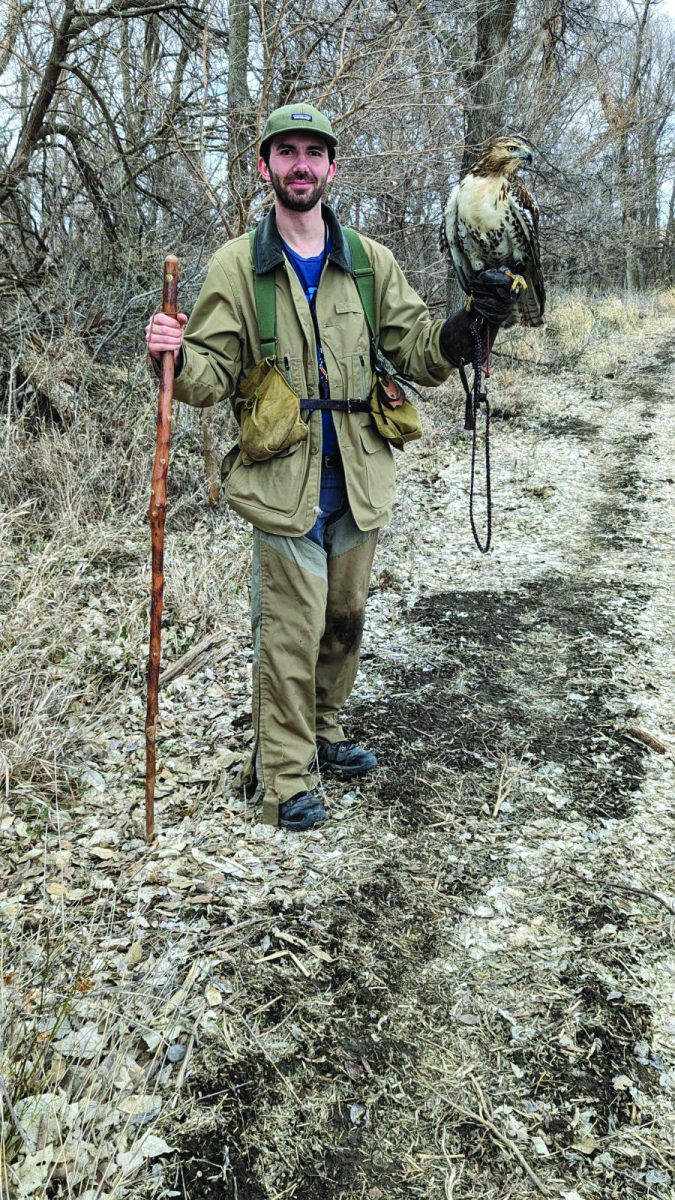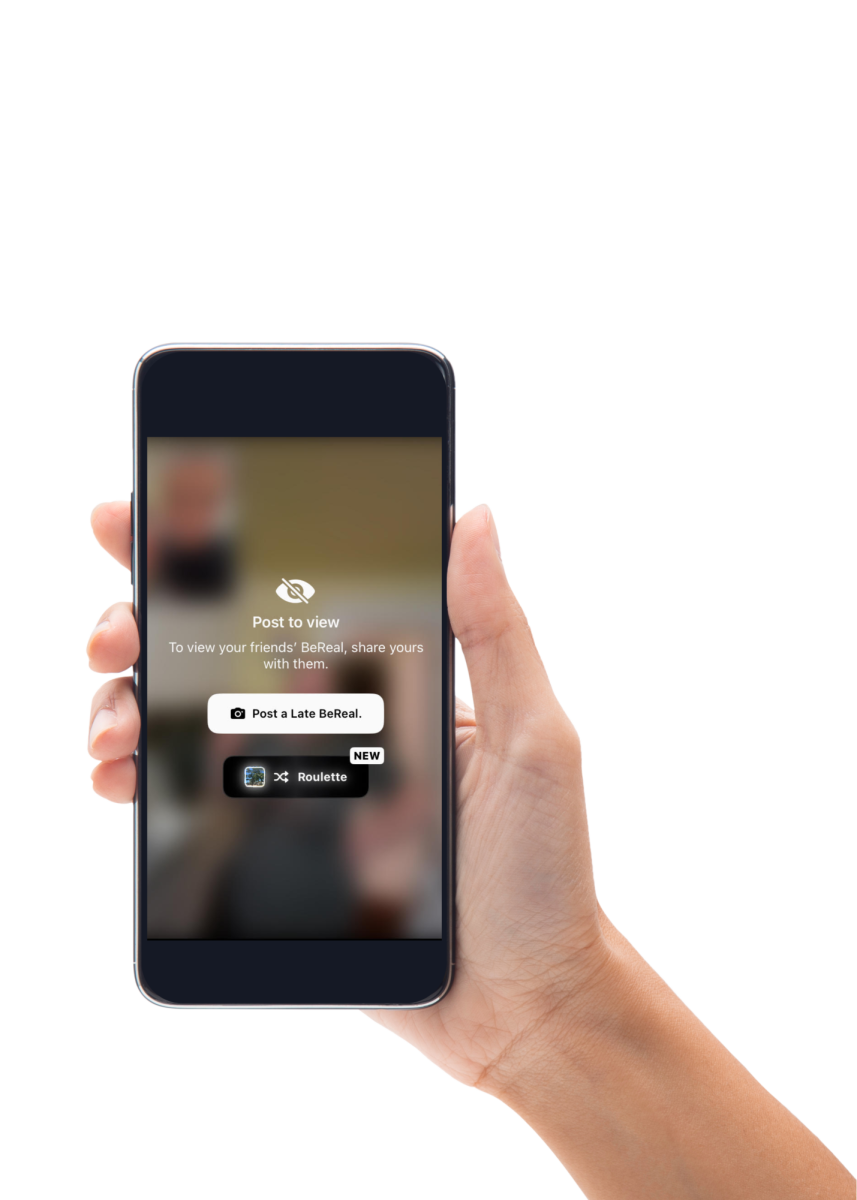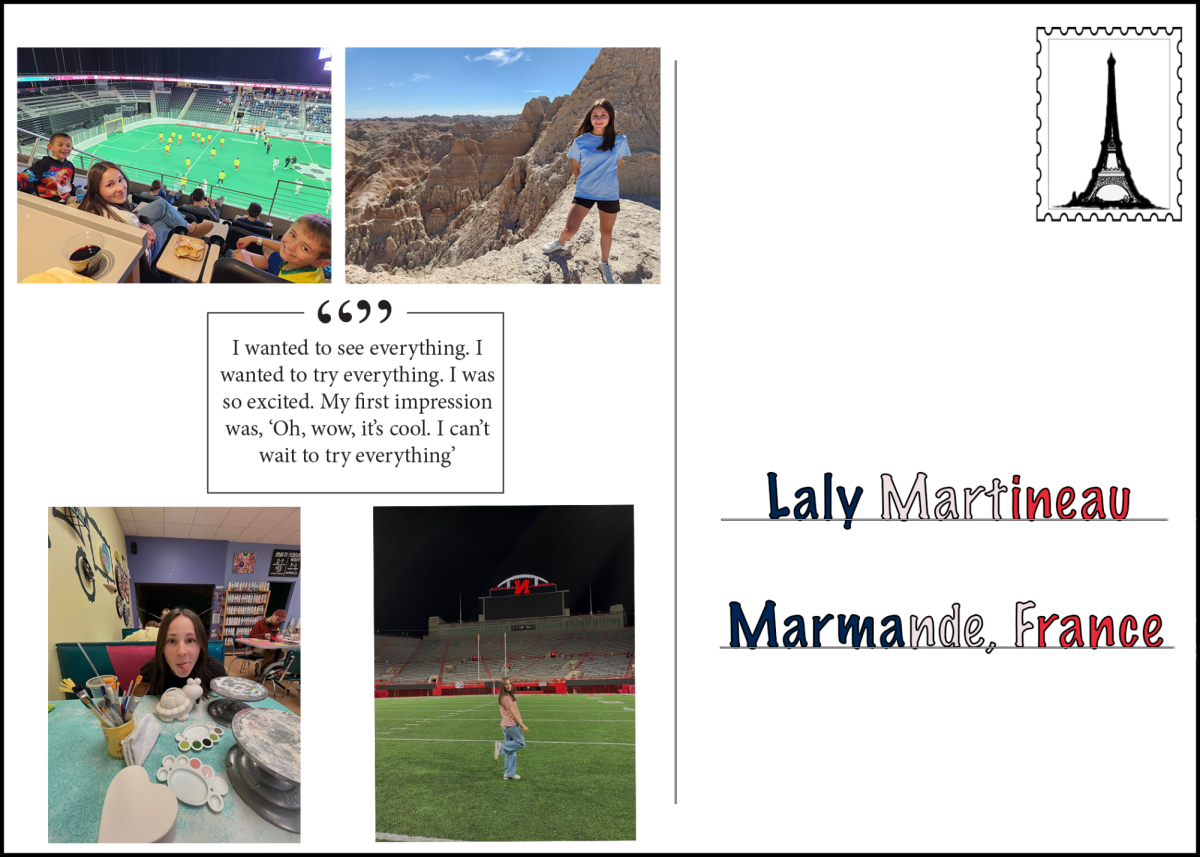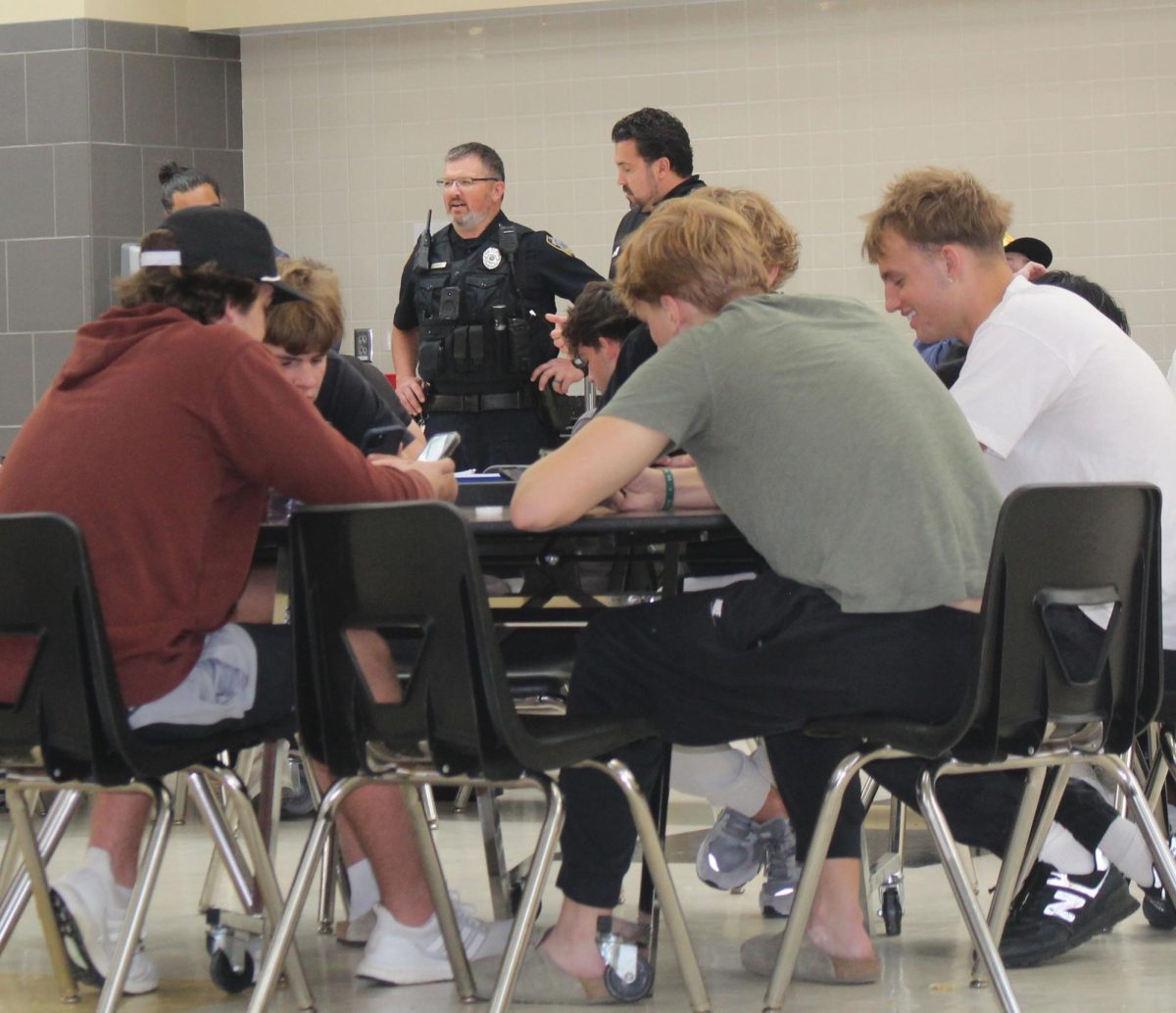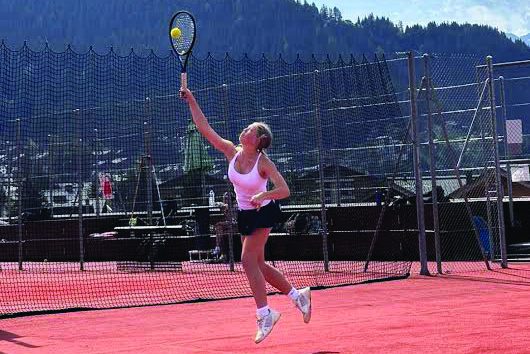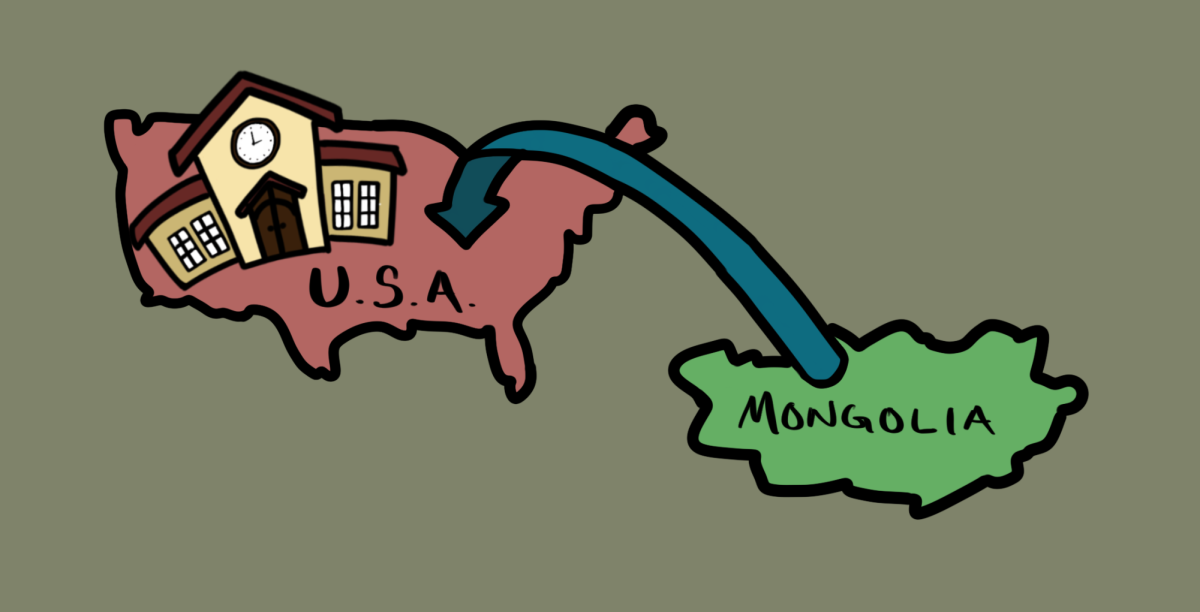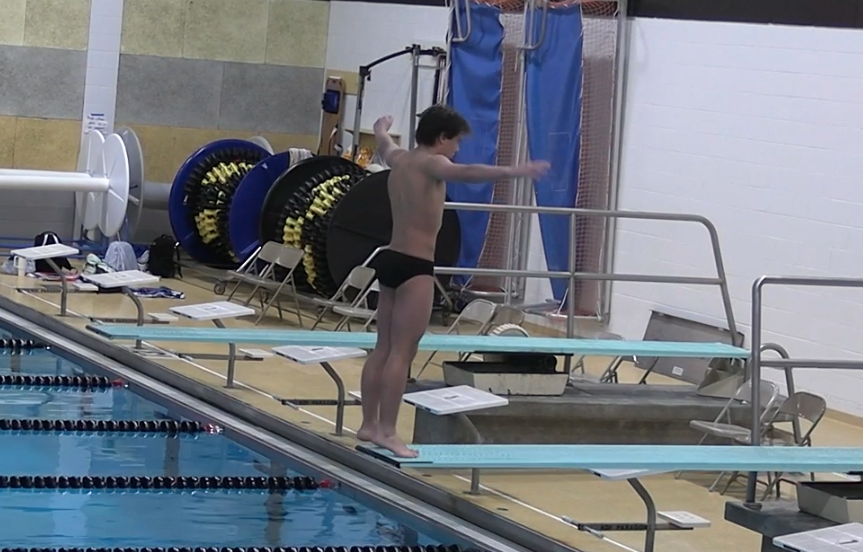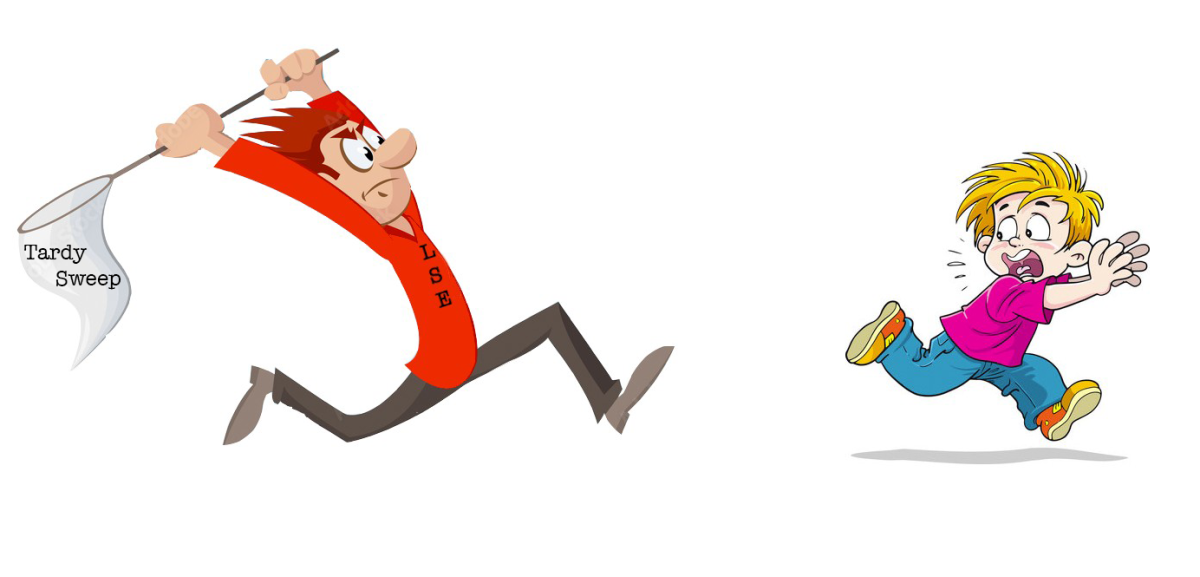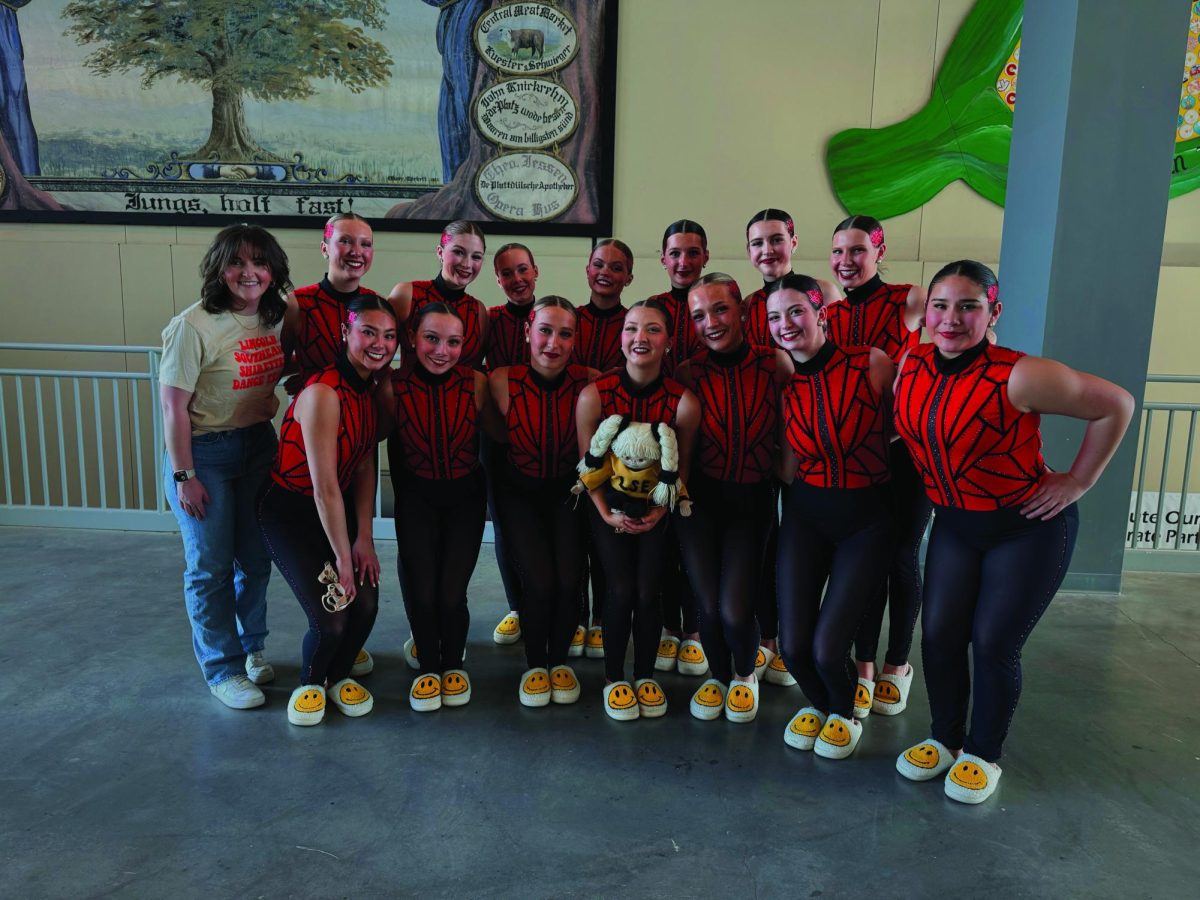Most people take care of fluffy cats, playful dogs or energetic gerbils, but not Lincoln Southeast English teacher Colten White, who decided on a whim one day, to pursue falconry and take a bird with talons and a razor sharp beak under his wing.
“I was in bed one day thinking, ‘Man, wouldn’t this be awesome?’ And then I just decided to make a go of it,” White said.
As raptors today face habitat loss and increased difficulty finding prey, their population has declined. Falconry is the practice of trapping, training and flying birds of prey. However, White explained that falconry is more than having a pet bird; it is important in ensuring the survival of birds of prey in the wild.
“First year birds, or juveniles, are called ‘passage birds’ because they are on their first passage through life,” White explained. “My job is to make sure that [the bird] gets through her first year healthy. Eighty percent of first year birds of prey usually die within their first year, and so [my hawk] will be one of an elite group of 20 or so percent of raptors that make it through their first year.”
Falconry is not a new practice, humans have been trapping and training birds of prey dating as far back as 1700 BC according to The Falconry Centre.
“One of the biggest reasons [I do this] is to keep this several thousand year human tradition going. I also think that it’s one of the most interesting ways to get firsthand experience with nature and the ecology of our natural environment and to care for the animals around us, and especially the birds of prey and their quarry,” White said.
The process of obtaining a falconry license is a long and difficult one. White had to find an experienced falconer to be his sponsor. As a new falconer, White began as an Apprentice and had to serve under either a General or Master falconer with years of experience in falconry. This sponsor acted as a guide for White and helped him along the process of becoming a falconer.
White also had to take the state falconry exam that tested his knowledge of birds of prey. The questions tested his knowledge on a range of topics, from the biology and health care of birds, to laws pertaining to falconry.
Finally, White had to construct the proper facilities to house his bird and buy the necessary equipment prior to his inspection from the Gaming Parks Commission. After passing the inspection of his facilities, White was able to apply for and receive his falconry license.
Despite the hoops he had to jump through, White believes it was worth it.
“I think that it’s for the best that there’s a lot of barriers to entry to make it so that people are serious and can take care of the birds in their care,” White said.

The next step after getting a falconry license, was to find and trap a bird from the wild. Falconry, despite its name, includes many different birds of prey including falcons, hawks, eagles and owls. Before trapping a bird, White decided that he was interested in working with a hawk.
“The process of trapping [a bird] from the wild consisted of driving around the outside of Lincoln and looking at power lines to see if there were Red-Tailed Hawks sitting on the power lines. Once we saw one, we would try to determine, based off of its feathers, if it was a first year bird and or an adult bird. If it was an adult bird, we would pass up and keep going because those birds are better left to the wild and kind of doing their own thing. But if it was a young bird, a juvenile, we would stop and we put gerbils in a cage [with] loops on it and we threw it out the window.”
White ended up with a juvenile Red-Tailed Hawk, which he named Bruna.
After getting Bruna over her fear of people, and getting her comfortable with humans providing food for her, White was able to move Bruna to her semi-permanent residence behind his house.
“Bruna lives in her little hawk house out behind my house that we put together, and she eats a varied diet that all birds of prey would love: whole mice, rabbits, quail. She really gets the four course fancy meals all the time,” White said.
It is important that Bruna, a bird of prey, gets enough exercise to keep her healthy both mentally and physically. White dedicates as much time as he can outside of school to Bruna’s well-being. White often takes Bruna hawking, which is the sport of taking a trained hawk hunting.
“Several days [a week], I’ll leave straight from school and go hawking. And then oftentimes on the weekends, I’ll go as well,” White said.
Traveling with a hawk might seem difficult, but Bruna loves car rides.
“She has a travel box with a perch inside of it. She actually loves her box quite a bit and gets excited whenever I open it up because she knows she gets to go somewhere and fly around.”
Although she loves the car, Bruna hates her reflection and White has to work hard to keep her away from reflective surfaces.
“I have to stand between her and anything reflective because she really likes to fight herself in the mirror. She would see herself in the reflection of the car window and would try to fight the hawk that’s there.”
Despite loathing her own reflection, White describes Bruna as an easygoing hawk who is calm around other birds.
“She just doesn’t tolerate getting startled, maybe by one suddenly appearing in front of her.”
White also says that Bruna and his other pet, a cat named Salmon, have an unspoken agreement to steer clear of each other. Both predators seem to understand the importance of keeping a distance between them.
Bruna cannot stay with White forever, however, and will likely be released this spring once the temperature warms up enough for her to easily find prey in the wild.
After saying goodbye to Bruna, White plans to start the process over again with a new juvenile bird.

